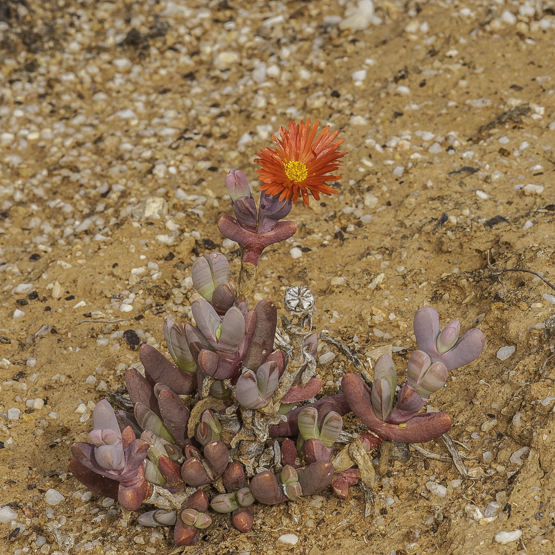Like many other Cephalophyllums, this species can quickly spread as a pioneer on disturbed or alluvial soil. This ability, combined with flowers in a wide variety of colours, makes them good ground cover subjects for gardens in a suitable climate.
The plants have dark green leaves, club-shaped, and 3-7 cm long.
In June-August, they produce flowers to 4 cm in diameter, with cream-coloured, yellow, pink or magenta petals and yellow or magenta stamens.
They occur in Namaqualand (Riethuis to Vredendal) and the northern Tanqua Karoo.
















